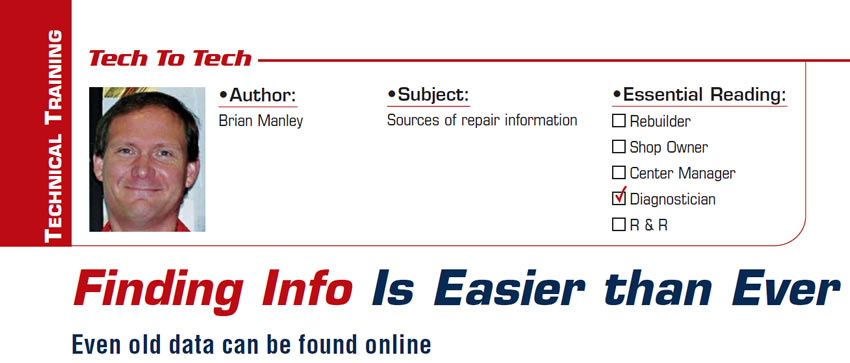The New Venture Dodge 244 Transfer Case – Are You Confused Yet?
Historical evolution of this series of transfer cases starts with the 2000 models. Dodge Durango and Dakota for 2000 had available the 231HD, 241LD and 242, depending on the vehicle’s specific engine and transmission. In 2001, these vehicles were equipped with a 233 or 244. These are electrically shifted units, with the 233 being an electronic 231 and the 244 being an electronic 242.
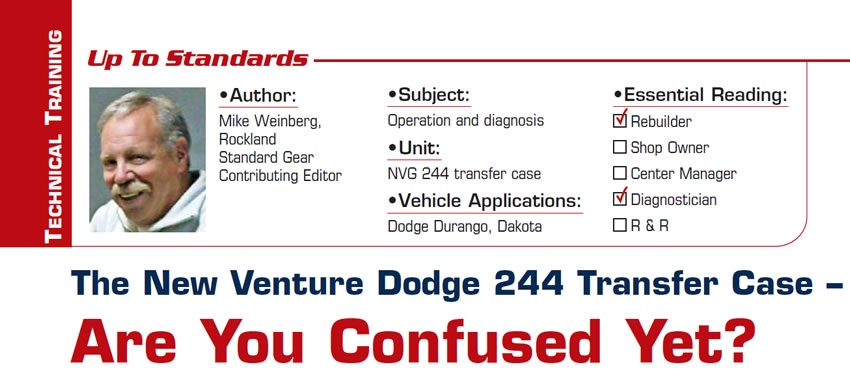
Ford’s Hybrid Transaxle, Part 1
Beginning with the 2005 model year Ford produced the Escape in a hybrid version (Figure 1) that was shared by the Mercury Mariner and Mazda Tribute, pretty much the same vehicle.
The transaxle in these vehicles is called the eCVT, and even though there are no pulleys or a drive belt its ability to change gear ratios in a stepless fashion using electric motors puts it into the CVT category. The hybrid system in these vehicles is considered a series/parallel system, which means it can take off on electric power only or it can use the internal-combustion engine (ICE).
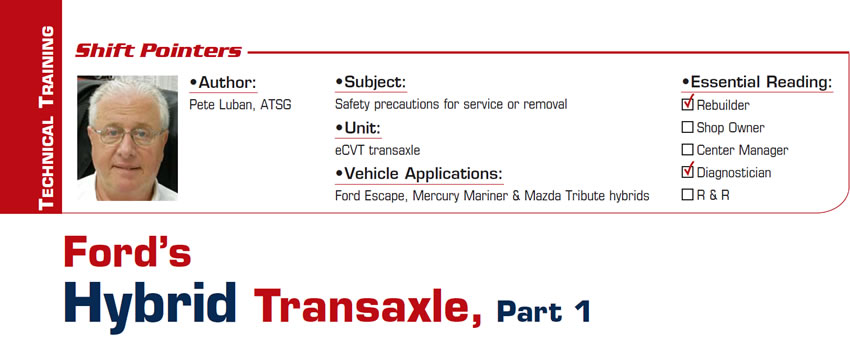
Harsh 1-2 Shift
I received a call from one of our wholesale customers, a shop that does general-repair and transmission work on occasion. He was looking for help on a 2004 Ford Freestar that he could not get to leave his shop. In fact, the vehicle had been to several other shops. He told me that another shop had worked on the transmission recently and that it was now back in his shop.
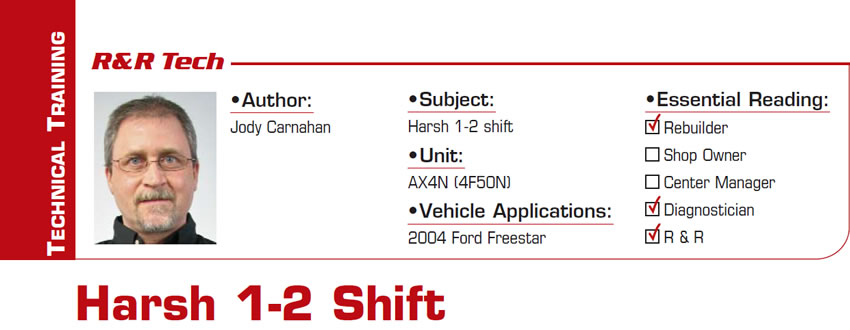
First Aid for Stators
In the early days of torque-converter rebuilding, most of the routine work involved re-machining thrust surfaces and then restoring clearances. Available service items such as thicker thrust washers and thicker end caps made this work relatively easy.
When the outer race of the one-way clutch became loose in the stator, rebuilders of the day faced a far-more-difficult challenge. The splined area on the outside diameter (OD) of the outer race broached a mirrored spline on the inside diameter (ID) of the stator when it was originally pressed into place (Figure 1).
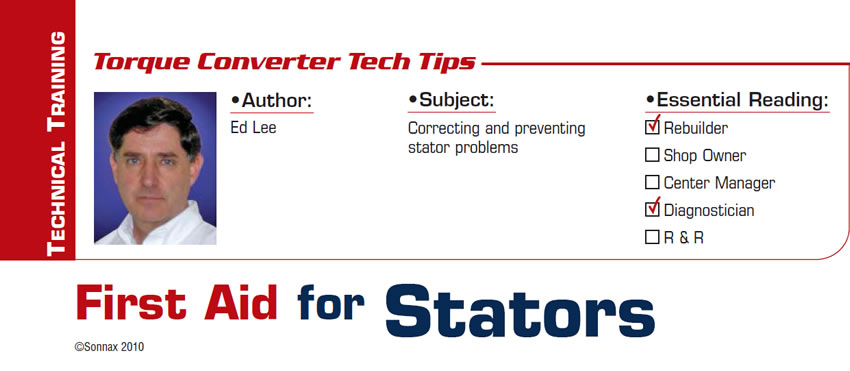
The Secret Code
When an electrical failure or some type of system failure occurs, prompting the computer to initiate a programmed failsafe condition for the transmission, it is essential for the technician to have the ability to obtain the diagnostic service code that accompanies the failsafe condition. Not having the ability to obtain this code or codes in essence causes the technician to be blind.
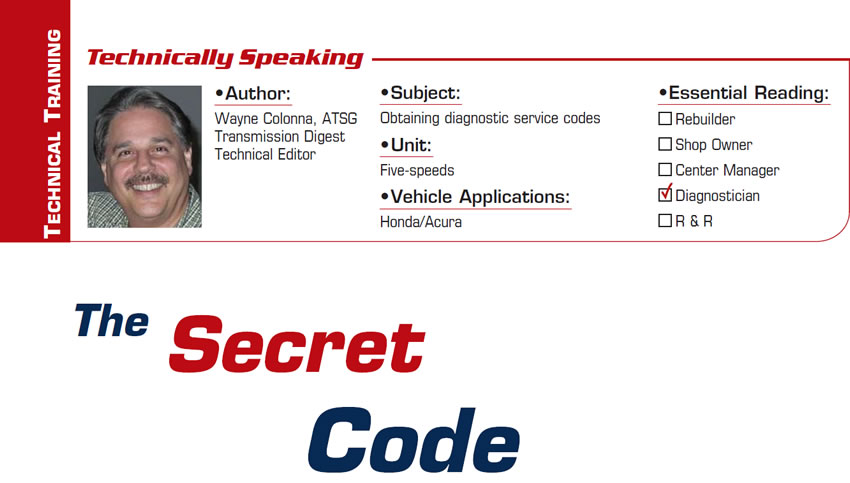
February 2011 Issue
In This Issue
Ford 5R110W: Repeated breakage of coast-clutch housing
Mitsubishi F4A40/50, F5A50 series: Gear-ratio-error codes
Mitsubishi F4A40/50, F5A50-series: Harsh 3rd and harsh downshifts
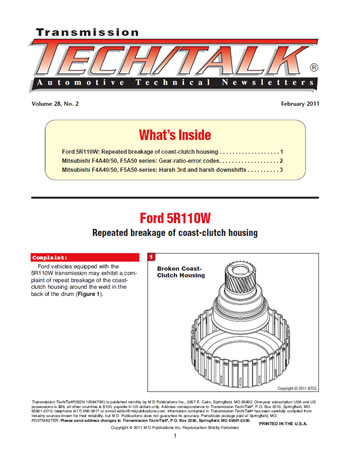
What Is Metal Fatigue and How Can It Be Prevented?
This football season is characterized by a preponderance of broken-down and injured quarterbacks. Numerous quarterbacks have been removed from games after repeated “sacks” from the on-rushing defense. A frequent observation from viewers is, “How long can this quarterback last under the strain of these repeated sacks and knockdowns?”
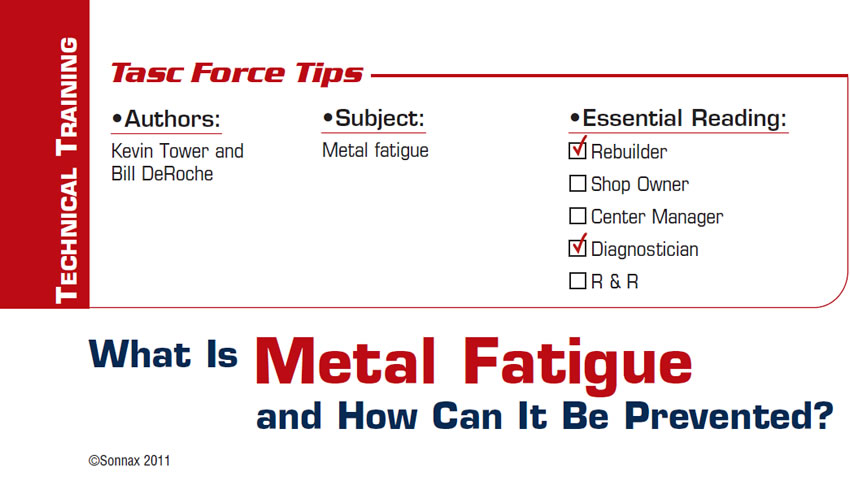
Diagnostics: To charge or not to charge; that isn’t the question
Pretty much every online forum lately has had the question come up as to whether charging for diagnostics is appropriate and/or good business practice. There are many opinions from which to choose. The bottom line, however, is that it’s your business so you need to pick one or several methods to be applied in varied circumstances that will keep your customers happy and at the same time allow you to make the money you require.
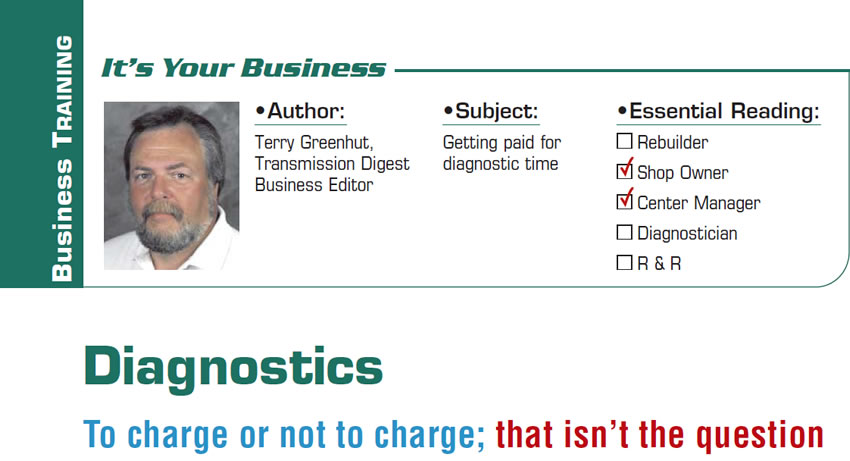
Finding Info Is Easier than Ever
Even old data can be found online
I have noticed lately that many familiar sources of information have some amazing features that allow us to save diagnostic time, as well as space on our bookshelves.
